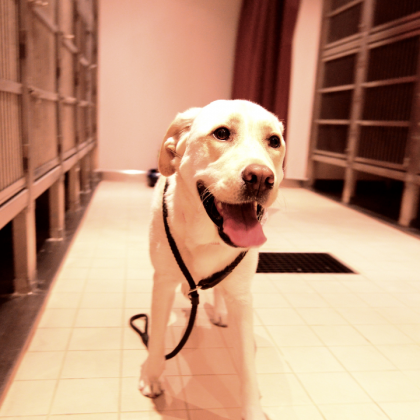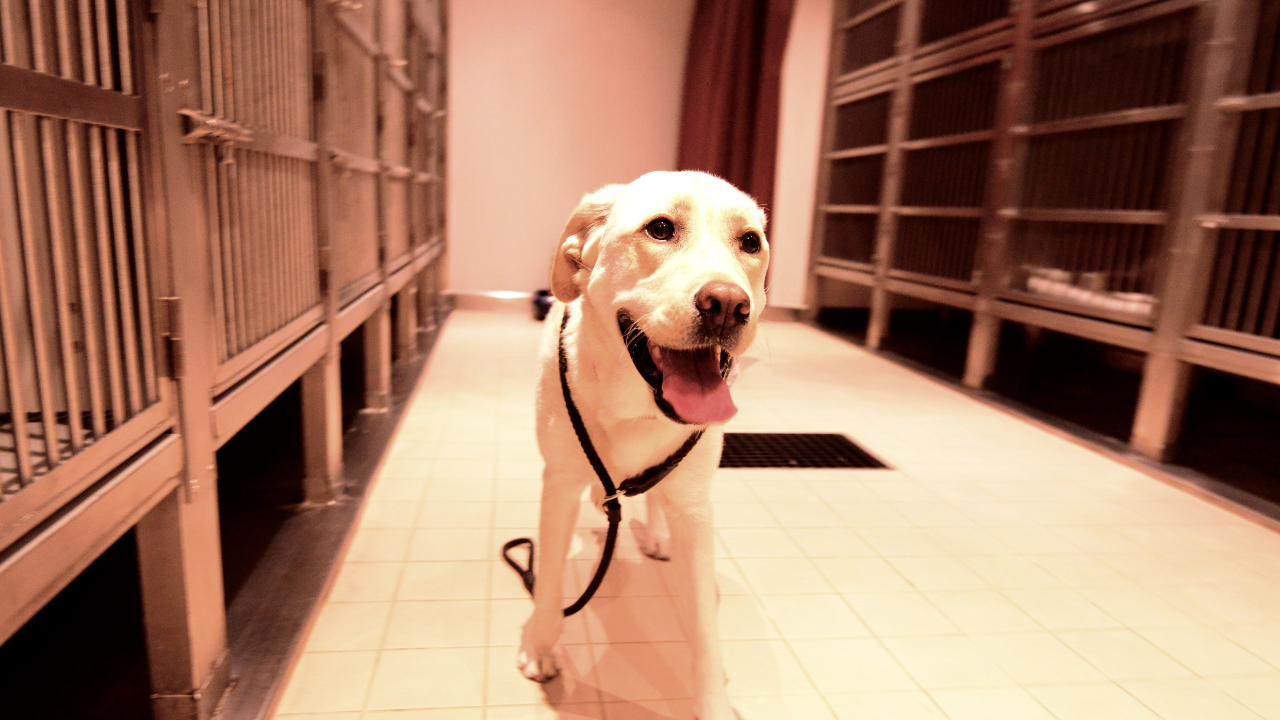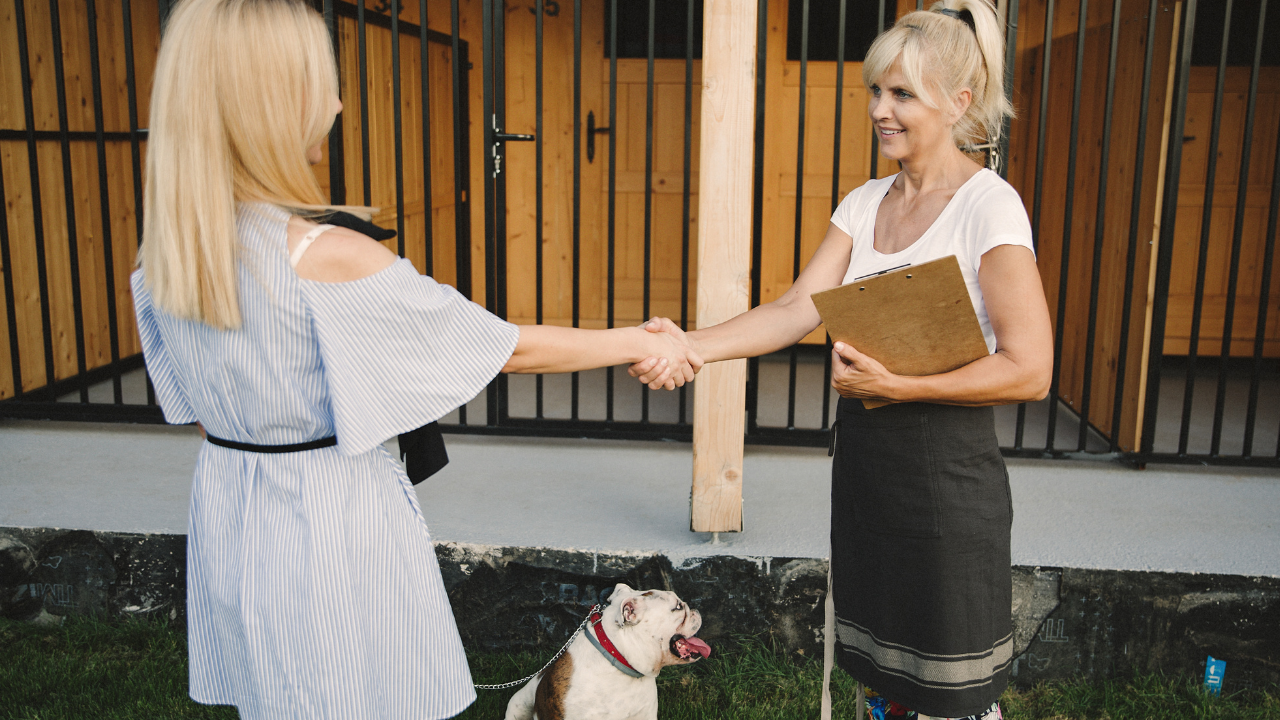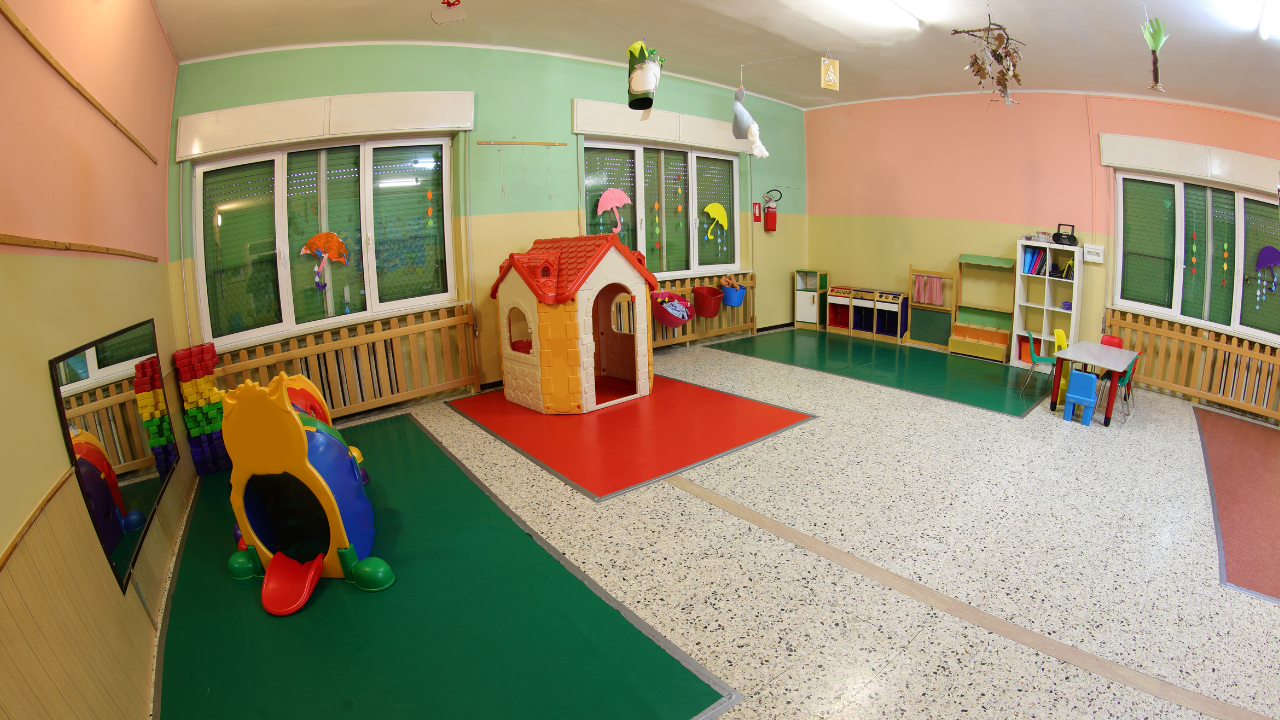Feature your business, services, products, events & news. Submit Website.
Breaking Top Featured Content:
How to Start a Dog Boarding Business

The pet industry in the United States, including boarding, grooming, training, etc., has been experiencing significant growth. The pet services sector has seen continuous expansion due to rising pet ownership, increased pet humanization, and owners’ willingness to spend more on pet care and well-being. If you’re ready to build a profitable venture in the pet industry, here’s a guide on how to start a dog boarding business.
The demand for quality pet care services, including dog boarding, is especially high, driven by pet owners who travel or work long hours and seek safe and reliable places for their pets. Understanding the growing market, meeting pet owner’s expectations, and conducting thorough research and market analysis are crucial steps in starting a successful pet boarding business.
Tailoring services to meet the needs and preferences of dog owners, ensuring the highest standards of care, and staying abreast of industry trends can help build a reputable and profitable dog boarding facility.
Why Start a Dog Boarding Business?

Specifically, the dog boarding business is growing as a pet industry segment. The increase in pet ownership and the rising demand for high-quality pet care services have fueled the growth in this sector.
Many dog owners seek facilities that offer a range of services and amenities to ensure their pets’ well-being and happiness while away.
If you love dogs, you completely understand the bond between humans and dogs. That’s a necessity for running a successful dog kennel business.
The Requirements of Pet Owners
Dog owners often look for the following features in a boarding facility:
Safety and Security:
- Secure fencing
- Surveillance cameras
- Proper kennel design
- Emergency protocols
Cleanliness and Hygiene:
- Regular cleaning and sanitization
- Pest control
- Veterinary-approved cleaning agents
Trained and Caring Staff:
- Staff with knowledge of animal behavior
- Adequate staffing levels
- Emergency veterinary access
Comfort and Environment:
- Proper shelter and bedding
- Temperature control
- Adequate space for movement
Enrichment and Exercise:
- Regular walks and playtime
- Socialization opportunities
- Enrichment activities
Health and Nutrition:
- Proper feeding
- Special diet accommodations
- Medication administration
Transparent Policies and Communication:
- Clear pricing
- Regular updates and reports to the owners
- Flexible pick-up and drop-off times
Starting a Dog Boarding Business: A Step-by-Step Guide

Before you can start welcoming dogs to your facility, you need to learn how to start a business. Here are some essential steps to take:
Research and Market Analysis
1. Market Trends and Demands:
Current trends in pet care and boarding.
Specific demands and preferences of pet owners.
2. Competitor Analysis:
Services, pricing, and USPs of local competitors.
Market share and customer reviews of competing businesses.
3. Customer Segmentation:
Identification of target customers and their preferences.
Analysis of different customer segments and their needs.
Crafting a Business Plan for Your Dog Boarding Facility
1. Pricing Strategies:
- Pricing models of competitors.
- Potential pricing strategies and their impact on profitability.
2. Regulatory and Compliance Requirements:
- Licenses and permits required for operation.
- Research common business structures and select a legal structure for your operation.
Compliance with local, state, and federal regulations, including animal welfare laws. For example, in Pennsylvania dogs may not be kenneled on wooden floors and there are guidelines for kennel width and length requirements specific to sizes of dogs.
3. Market Growth and Opportunities:
- Potential growth of the pet boarding industry in the target area.
- Identification of untapped market opportunities.
4. Location and Accessibility:
- Suitable locations and their accessibility to the target market.
- Analysis of location-based demand and competition.
5. Risks and Challenges:
- Identification of potential risks and challenges in the market.
- Assessment of strategies to mitigate risks and overcome challenges.
6. Revenue Streams and Profitability:
Identification of potential revenue streams, including additional services like grooming and training.
Analysis of cost structures and profitability margins.
Choosing the Ideal Location
This is the most important part of the process. You’ll be challenged by the need to locate in reasonable proximity to your customers in residential areas, while complying with local zoning laws.
In general, the most favorable zoning for dog boarding/kennel business is Agricultural. Even then, a dog boarding facility may have to apply for approval under zoning categories such as Special Exception or Conditional Use. In some areas, however, in specific zoning areas such as Agricultural or Commercial, a dog boarding facility may be “permitted by right,” which means no hearing would be needed.
When a zoning hearing is needed, the governing entity, such as a town or township, is required to advertise the hearing in a newspaper of general circulation in the area and also by mail to notify all neighbors in a certain radius of the proposed business.
When you’re developing a business plan, keep in mind the need to be a good neighbor. You must take steps to eliminate outdoor barking – which is the number one complaint neighbors have about dog boarding businesses. If you have a good plan for that, you’ll be better prepared for your zoning hearing.
Obtaining Necessary Permits and Licenses
For a dog boarding facility, the following permits and licenses are typically required:
- Business License: To operate a legal business.
- Kennel License: Specific to businesses housing animals.
- Zoning Permits: To ensure the business location complies with local zoning laws.
- Health Department Permit: To ensure cleanliness and sanitary conditions.
- Building Permit: If construction or significant remodeling is planned.
Additionally, small business insurance is crucial for covering potential liabilities, and it’s essential to comply with any state-specific requirements and local animal welfare laws.
| Feature/Requirement | Business License | Kennel License | Zoning Permits | Health Department Permit | Building Permit |
|---|---|---|---|---|---|
| Purpose | Legal operation of any business | Housing of animals in a commercial capacity | Ensure location complies with zoning laws | Ensure sanitary and cleanliness standards | For construction or significant remodeling |
| Issued By | City or County Business Department | City or County Animal Control or similar department | Local Planning or Zoning Department | Local Health Department | Local Building Department |
| Required For | All businesses | Businesses boarding or housing animals | Location-specific; ensures business can operate in the given area | Businesses that could impact public health | Constructing or remodeling business structures |
| Typical Renewal Period | Annually or varies by jurisdiction | Annually or varies by jurisdiction | Often one-time, unless business changes or codes change | Annually or based on inspections | One-time for a specific project, new permits for new projects |
| Key Considerations | May require proof of address, business name, type of business | May need facility inspection, proof of adequate animal care | Need to verify land use, may require public hearings | Regular inspections, may require training/certification | May need architectural plans, comply with safety codes |
Setting Up a Business Bank Account for Your Dog Boarding Business
In addition to setting up a separate bank account, use a dedicated credit card for the business.
Financing Your Dog Boarding Business
When you approach a lender, be prepared with detailed documentation about your finances. Also, be prepared to drop off your well-crafted business plan, as well as information about your zoning approval.
Don’t overlook the Small Business Administration loans, which are available through participating banks. You may qualify for an SBA loan, and those typically have lower interest rates and longer payback terms.
Setting Up the Premises
Whether you’re building new or retrofitting an existing building, the safety of the dogs should be tops on your list. Think of multiple gates and entry doors, organized so that if a dog gets out of one area, it will be confined in another.
The design of the drop-off and pick-up area is also very important. Dogs may be apprehensive about being taken into the boarding facility. Some facilities set up a gated area with code access so that the pet is loaded and unloaded inside a fenced area.
You should be able to separate dogs of different sizes and temperaments and especially elderly dogs. Elderly dogs may require nonslip flooring and comfortable lounge areas.
Play areas for exercise are an added feature. If you don’t have room initially for a big play area, you may add dog walks to your services. An indoor play area will help you minimize outside noise.
Hiring and Training Staff
Dog care alone, with basic feeding, watering and cleanup, takes a lot of time. Even if you start small, you may soon have to add staff.
Choose carefully! It’s important that staff members love dogs, but that’s not enough. They need training is canine first aid and emergency protocols. They should have an understanding of dog behavior and be able to read signs of anxiousness, sickness or aggression in dogs.
Marketing and Branding in the Pet Business
If you’re wondering, “what is marketing for a pet boarding business?” here are some strategies to consider:
- Leverage Social Media: Use platforms like Instagram and Facebook to showcase your facility, share customer testimonials, and engage with potential customers.
- Partnership with Veterinarians & Pet Shops: Establish partnerships with local vets and pet stores for referrals.
- Loyalty Programs: Offer discounts or rewards to repeat customers.
- Community Engagement: Attend local events, sponsor local pet-related activities, and network with pet owners.
- SEO & Online Presence: Optimize your website for search engines and maintain an active presence on online review sites like Yelp. See our website startup guide for more on what to include.
Pricing and Packages
- Costs: Factor in overhead, staff wages, food, utilities, and other operational costs.
- Competitor Pricing: Research local competitors’ pricing to stay competitive.
- Demand: Consider peak seasons and adjust pricing accordingly.
- Value-added Services: Price additional services like grooming or training separately.
- Customer Segments: Different pricing for different customer segments, if applicable.
It’s important when pricing to be reasonable and fair while making money. An important factor to consider is downtime. Dog boarding needs to peak during the summer vacation months and again during holidays, as people travel when pricing doesn’t forget to allow for slow months.
Expanding and Diversifying Services
Dog grooming does not require special certifications. However, do be a professional dog groomer – think of those gorgeous long-haired canines prancing around at dog shows – you have to be very experienced and good at special types of cuts and trims.
You can offer limited grooming services, such as a bath on the day the dog goes home. To further expand, you can hire or lease space to an experienced groomer.
If you have the space, you can consider adding dog training periods for dogs that are being boarded. Or, you can provide space for training classes to help you grow your customer base.
What about adding cat boarding? That’s not a bad idea. Probably, you’d have to make sure they couldn’t hear the dogs!
Vaccination and Health Requirements

Any business involving dogs should adhere to strict vaccination protocols. All dogs should be fully vaccinated, including rabies and DA2PPV – which is distemper, adenovirus, parainfluenza and parvo. There is also a canine influenza vaccination. Canine influenza is extremely contagious.
At the time a customer makes a reservation, he or she should be told about the need to provide proof of vaccinations. This must be done in advance of the dog’s stay.
You should develop an excellent working relationship with a nearby veterinarian. Ask the veterinarian to provide advice on the current vaccine protocol. For example, dogs can also get a disease called Leptospirosis, but they aren’t typically vaccinated for that unless there is an outbreak.
The Dog Daycare Business Model

Adding a dog daycare can diversify revenue streams and increase overall income, but it also necessitates:
- Extended Operating Hours: To accommodate owners dropping off and picking up at various times.
- Additional Staffing: To monitor and care for dogs during the day.
- Enhanced Facilities: Including play areas and equipment for daytime activities.
- Increased Marketing: To promote the new service to existing and potential customers.
Facility Requirements and Staffing for Doggy Daycare
Doggie daycare typically involves more hands-on interactions with the dogs. That’s the reason their owners brought them there – so they could play and enjoy human contact during the day.
Yet, dogs do enjoy a lot of napping and rest times. Those areas should be provided, as well as dedicated play and even training areas.
At many dog daycares, multiple dogs are permitted to play in a group. Allowing this takes time and careful consideration. As previously stated, safety for the animals is of primary importance.
Doggy Daycare Pricing and Package Offers
Similar to daycare for children, there are package deals. In fact, the great majority of Dog daycare customers purchase a weekly plan. If you offer a monthly discount, you may not only build a strong client base – but also be better able to project anticipated income.
How Much Does a Dog Boarding Business Make a Year?

Earnings can vary widely, depending on location, pricing, occupancy rate, and operational costs. It is crucial to conduct market research to project potential earnings accurately, based solely on boarding without additional services.
Profits are also dependent on your number of available dog runs. For example, in city areas, a daily boarding fee may be $50-80. If you have 20 runs, that’s $1,000 per day. But that doesn’t factor in your overhead, staff salaries, utilities and other factors. You must also consider whether or not all the runs will always be full.
If you stay small and only fill the number of runs that you can handle yourself, obviously, you won’t have to pay staff. But you may be working every day of the week. You would definitely need someone who can fill in reliably for you in case of illness, injury or emergency.
The dog boarding business is hard work, physically and mentally demanding, but it carries the potential to make really good money.
Dog Boarding Business Start-Up Costs

Costs will vary significantly depending on location, facility, and other factors but may include:
- Lease/Property Costs: Depending on location and size.
- Construction/Remodeling Costs: To build kennels and other necessary facilities.
- Licensing & Permits: Costs associated with obtaining necessary licenses and permits.
- Operating Expenses: Including utilities, insurance and staff wages.
- Marketing Expenses: For advertising and promotion.
| Feature/Consideration | Lease/Property Costs | Construction/Remodeling Costs | Licensing & Permits | Operating Expenses | Marketing Expenses |
|---|---|---|---|---|---|
| Purpose | Acquire space to operate the business | Create or update facilities to fit the business needs | Comply with local legal requirements | Day-to-day operations of the business | Attract customers to the business |
| One-time or Recurring | Recurring (monthly or annually, unless property is purchased) | Mostly one-time (unless further remodeling is needed) | Some one-time, some recurring (annual renewals) | Recurring | Both (initial campaign and ongoing promotion) |
| Factors Impacting Cost | Location, size of property, local real estate market | Size and complexity of project, labor rates, materials | Local regulations, type and number of permits/licenses | Utility rates, insurance rates, number of employees & wages | Marketing channels used, frequency of campaigns |
| Possible Cost Range | Varies widely by location and size; could be $1,000s to $10,000s monthly | Depending on project: $10,000s to $100,000s or more | Varies by municipality; could be $100s to $1,000s | Depending on size & location: $1,000s to $10,000s monthly | Varies by scale; could be $1,000s to $10,000s or more |
| Key Considerations | Length of lease, possibility of purchase, terms of lease | Finding contractors, ensuring compliance with codes | Staying updated with local regulations, timely renewals | Planning for variable and fixed expenses, budgeting | Identifying target audience, effectiveness of campaigns |
Challenges and Potential Solutions in the Kennel Business

Of course, the seasonal nature of the dog boarding business presents financial challenges. But with careful planning, you can set money aside for those weeks or months when the kennel is not full.
Another challenge in dog boarding is burnout. Customer service can be challenging when customers can’t adhere to scheduled drop-off and pickup times. Or you may be housing dogs with behavior issues, such as excessive barking or even aggression.
What can you do about those issues? You can set extra fees for pickup and drop-offs outside or regularly scheduled times. You have the right to refuse to board dogs, which created problems for you, staff and their canine roommates. You can also suggest training programs for problem dogs.
FAQs: How to Start a Dog Boarding Business
How much does a Pet Boarding Business Owner Make?
That does vary but in general, if a boarding business has 20 dog runs at a rate of $50 per day, that’s $1,000 per day. But that’s gross, to figure net you’d have to subtract overhead costs such as utilities and rental/mortgage, staff costs and other costs.
What’s the growth rate of the pet care industry?
The US pet industry was estimated at $79.3 billion in 2021 and is expected to grow to #325.74 billion by 2028. The pet industry grows by 11.6 percent every year. The average pet-owning household spends $1,120 per year on their pets.
How much does it cost to build a dog kennel?
The cost will depend largely on location, labor costs, materials, and whether you are building from scratch or modifying an existing structure. Preliminary research, including obtaining quotes from contractors and sourcing materials, will provide a more accurate estimate. All of these steps should be part of your business startup checklist.
You can expect to spend at least $500 for a high-quality, single kennel with a size of 5 x 10 feet. That would be a good size for an outdoor run; you will also need an indoor run ($250) and an in/out door ($150). So for each dog run you can expect to spend about $900.
Is a dog daycare business more profitable than a dog boarding facility?
Both businesses have their pros and cons, and the better option depends on individual circumstances, market demand, and personal preference.
- Dog Boarding: Typically sees higher demand during vacation seasons and may have varying occupancy rates during the year.
- Dog Day Care: Can have consistent demand throughout the year but may require more active management and staffing during operating hours.
Assessing local demand, competition, and your business goals will help determine which model is more suitable for your situation. There are also pet franchises in various business models that can help you get started quickly.
Starting a dog boarding or daycare facility involves multiple considerations, including legal requirements, market analysis, pricing strategies, and operational planning. Whether choosing dog boarding, daycare, or a combination of both, a comprehensive business plan considering all aspects, including startup costs, earning potential, and business model intricacies, is crucial for long-term success.
Image: Envato Elements
This article, “How to Start a Dog Boarding Business” was first published on Small Business Trends
